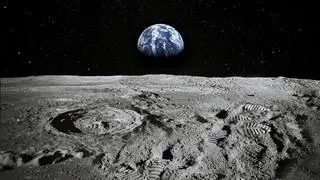New photos beamed back by a NASA spacecraft zooming towards Pluto have unveiled more intriguing details of the dwarf planet’s complex and high-contrast surface.
Images of Pluto from NASA’s New Horizons spacecraft are growing in scale as the spacecraft approaches its mysterious target, the US space agency said.
The new images, taken between May 8 and 12 using a powerful telescopic camera and downlinked last week, show more detail about Pluto’s complex varied surface.
The images were taken from just under 77 million kilometres away, using the Long-Range Reconnaissance Imager (LORRI) on New Horizons.
Because New Horizons was approximately 20 million miles closer to Pluto in mid-May than in mid-April, the new images contain about twice as many pixels on the object as images made in mid-April.
A technique called image deconvolution sharpens the raw, unprocessed pictures beamed back to Earth.
In the April images, New Horizons scientists determined that Pluto has broad surface markings — some bright, some dark — including a bright area at one pole that may be a polar cap.
“These new images show us that Pluto’s differing faces are each distinct; likely hinting at what may be very complex surface geology or variations in surface composition from place to place,” said New Horizons Principal Investigator Alan Stern.
“These images also continue to support the hypothesis that Pluto has a polar cap whose extent varies with longitude; we’ll be able to make a definitive determination of the polar bright region’s iciness when we get compositional spectroscopy of that region in July,” said Stern.
The images New Horizons returns will dramatically improve in coming weeks as the spacecraft speeds closer to its July 14 encounter with the Pluto system, covering about 750,000 miles per day.







Comments
Comments have to be in English, and in full sentences. They cannot be abusive or personal. Please abide by our community guidelines for posting your comments.
We have migrated to a new commenting platform. If you are already a registered user of TheHindu Businessline and logged in, you may continue to engage with our articles. If you do not have an account please register and login to post comments. Users can access their older comments by logging into their accounts on Vuukle.